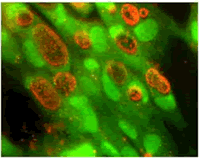 Arthropod/Vector
Bacteria
Chemicals
Fungus /Mold
/ Yeast Metals Parasites Virus Other Arthropod/Vector
Bacteria
Chemicals
Fungus /Mold
/ Yeast Metals Parasites Virus Other
|
Chlamydia
The three Chlamydia species include: Chlamydia trachomatis (a human pathogen), Chlamydia suis (affects swine), and Chlamydia muridarum (affects mice and hamsters). Chlamydia can be transmitted via vaginal, anal, or oral sex, and can be passed from an infected mother to her baby during vaginal childbirth. C. trachomatis is an obligate intracellular pathogen (i.e. the bacterium lives within human cells) and can cause numerous diseases in both men and women. Both sexes can experience urethritis, proctitis (rectal disease and bleeding), trachoma, and infertility. The bacterium can cause genital discharge, prostatitis and epididymitis in men. The bacterium can cause cervicitis, pelvic inflammatory disease (PID), ectopic pregnancy, and acute or chronic pelvic pain in women. C. trachomatis is also an important neonatal pathogen, it can lead to infections of the eye (trachoma) and pulmonary complications. Chlamydia trachomatis is the single most important infectious agent associated with blindness. Approximately 600 million people worldwide suffer with C. trachomatis eye infections and 20 million are blinded as a result of the infection. This Quantum Formula antidotes the various species in the Chlamydia genus. |
|



